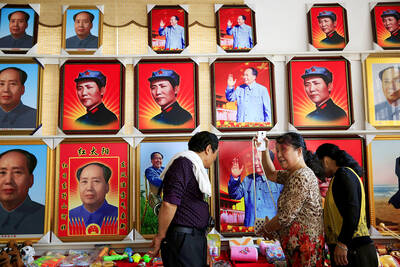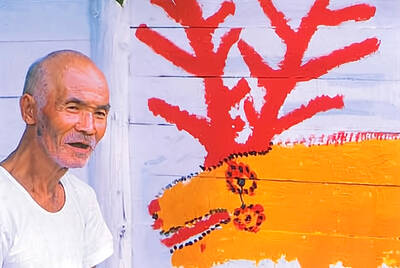Located across from Breeze Center (微風廣場), the interior of Home’s Thai (香米泰國料理) is as trendy as you’d expect from a popular restaurant in this neighborhood. It’s dimly lit and appointed with sleek tables and chairs. A glimmering ceiling-to-floor crystal curtain sets off the staircase to the restaurant’s second floor.
But despite its coolly modern interior, Home’s offers comfortingly familiar and piquant Thai classics.
The restaurant’s menu is extensive — almost overwhelmingly so. Appetizers are divided into two sections, one that features exclusively fried items like shrimp cakes and battered and deep-fried frogs legs. For a healthier option, try the Thai-style raw shrimp (NT$350). The dish is a Thai restaurant staple, but the version at Home’s Thai is notable for the freshness of its firm, plump shrimp, which are butterflied and covered in a big heap of diced garlic and chili peppers.
As with any menu the size of Home’s, there are bound to be a few lackluster dishes. The Thai tapo (NT$280) is ground chicken, beef or pork (we chose pork) stir-fried with chili peppers and sauce. The dish is served with lettuce leaves for wrapping, but the oil made it somewhat difficult to get the meat successfully inside. The Thai spicy fried crab with lemon grass had a good balance of flavors, but like the Thai tapo was also distractingly greasy. At NT$680, it was also one of the most expensive items on the menu.
Home’s Thai’s version of another classic, chicken satay (NT$280), is much better, with big, juicy pieces of meat on skewers and two delicious dipping sauces, a thick peanut butter sauce and a lighter sweet-and-sour option. For something more unusual, order the Thai-style grilled lamb chop with spicy sauce (NT$460), which is cooked just as skillfully as the chicken satay and more robust in taste.
Two seafood dishes, the spicy fried seafood (NT$300) and Thai sauce squid blend (NT$300), are both excellent, flavored with just enough chili and garlic. The spicy fried seafood, which is actually stir-fried, is especially good, with plump mussels, shrimp, squid and crab leg meat. The squid blend is served cold as a salad and topped with thin stalks of crunchy celery that complement the firm but tender slices of seafood.

Taiwan can often feel woefully behind on global trends, from fashion to food, and influences can sometimes feel like the last on the metaphorical bandwagon. In the West, suddenly every burger is being smashed and honey has become “hot” and we’re all drinking orange wine. But it took a good while for a smash burger in Taipei to come across my radar. For the uninitiated, a smash burger is, well, a normal burger patty but smashed flat. Originally, I didn’t understand. Surely the best part of a burger is the thick patty with all the juiciness of the beef, the

The ultimate goal of the Chinese Communist Party (CCP) is the total and overwhelming domination of everything within the sphere of what it considers China and deems as theirs. All decision-making by the CCP must be understood through that lens. Any decision made is to entrench — or ideally expand that power. They are fiercely hostile to anything that weakens or compromises their control of “China.” By design, they will stop at nothing to ensure that there is no distinction between the CCP and the Chinese nation, people, culture, civilization, religion, economy, property, military or government — they are all subsidiary

This year’s Miss Universe in Thailand has been marred by ugly drama, with allegations of an insult to a beauty queen’s intellect, a walkout by pageant contestants and a tearful tantrum by the host. More than 120 women from across the world have gathered in Thailand, vying to be crowned Miss Universe in a contest considered one of the “big four” of global beauty pageants. But the runup has been dominated by the off-stage antics of the coiffed contestants and their Thai hosts, escalating into a feminist firestorm drawing the attention of Mexico’s president. On Tuesday, Mexican delegate Fatima Bosch staged a

Nov.10 to Nov.16 As he moved a large stone that had fallen from a truck near his field, 65-year-old Lin Yuan (林淵) felt a sudden urge. He fetched his tools and began to carve. The recently retired farmer had been feeling restless after a lifetime of hard labor in Yuchi Township (魚池), Nantou County. His first piece, Stone Fairy Maiden (石仙姑), completed in 1977, was reportedly a representation of his late wife. This version of how Lin began his late-life art career is recorded in Nantou County historian Teng Hsiang-yang’s (鄧相揚) 2009 biography of him. His expressive work eventually caught the attention